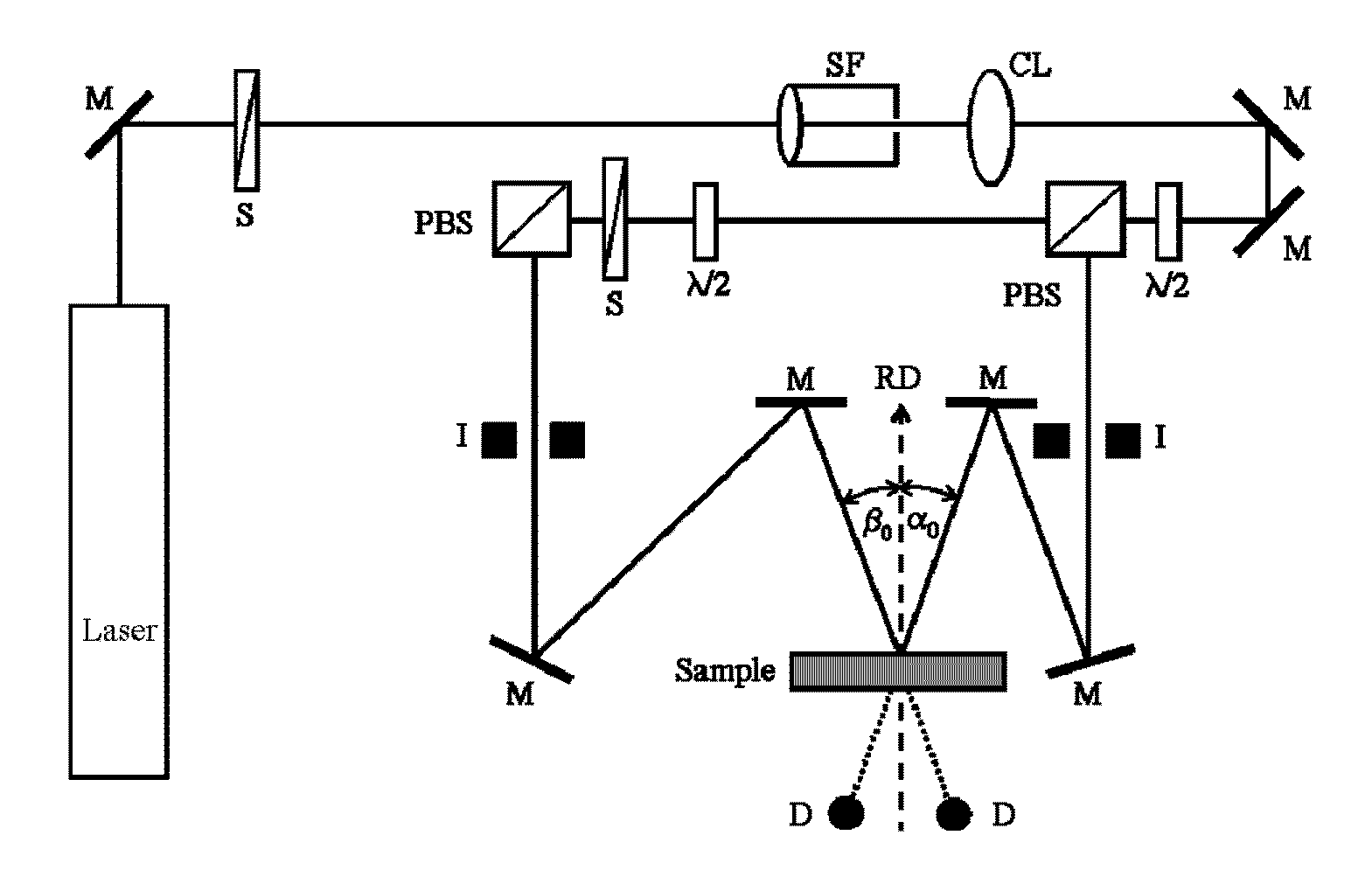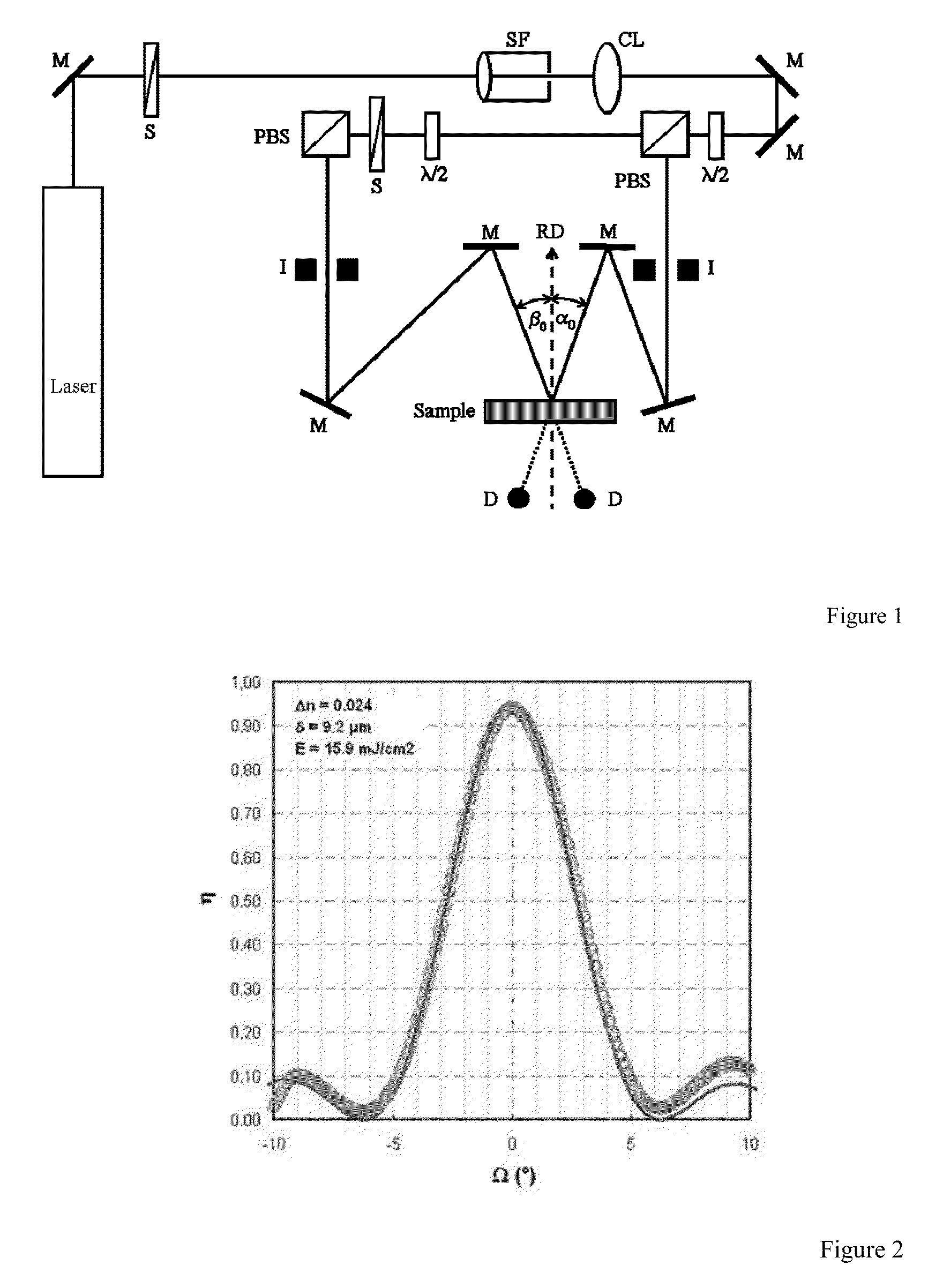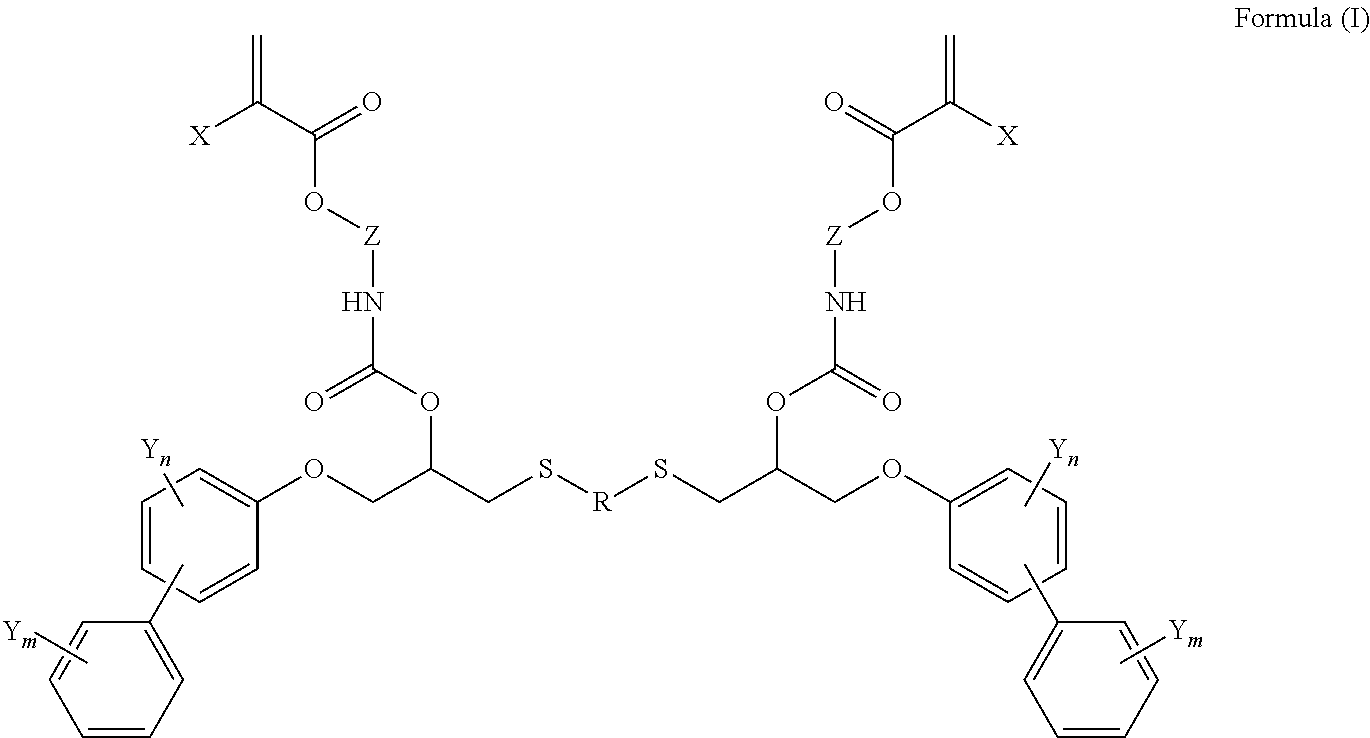Difunctional (meth)acrylate writing monomers
a technology of acrylate and writing monomers, which is applied in the field of difunctional (meth) acrylate writing monomers, can solve the problems of difficult to achieve uniform distribution of writing monomers in the photopolymer formulation and the medium produced therefrom, and achieve the effect of high refractive index contrast and not contributing to any impairment of optical quality
- Summary
- Abstract
- Description
- Claims
- Application Information
AI Technical Summary
Benefits of technology
Problems solved by technology
Method used
Image
Examples
example 1a
3,3′-(Ethane-1,2-diyldisulphanediyl)bis[1-(biphenyl-2-yloxy)propan-2-01]
[0181]Reactants: 14.3 g of 2-[(biphenyl-2-yloxy)methyl]oxirane[0182]34 mg of 1-butyl-3-methylimidazolium bromide[0183]2.8 g of 2-ethanedithiol[0184]Conditions: Reaction temperature 70° C.; addition of dithiol within 1 hour, reaction time 19 hours[0185]A clear colourless viscous liquid was obtained.
[0186]1H NMR (CDCl3, 400 MHz): δ (1H)=7.45 (d, 2H), 7.38 (t, 2H), 7.32 (m, 3H), 7.16 (t, 1H), 6.97 (d, 1H), 3.90-4.05 (m, 3H), 2.60-2.75 (m, 3H), 2.55 (dd, 1H), 2.45 (t, 1H, OH).
example 2a
3,3′-(Propan-1,3-diyldisulphanediyl)bis[1-(biphenyl-2-yloxy)propan-2-ol]
[0187]Reactants: 14.3 g of 2-[(biphenyl-2-yloxy)methyl]oxirane[0188]33 mg of 1-butyl-3-methylimidazolium bromide[0189]3.2 g of 1,3-propanedithiol[0190]Conditions: Addition within 30 minutes at 60° C. then 80° C., reaction time 20 h[0191]A clear colourless viscous liquid was obtained.
[0192]1H NMR (CDCl3, 400 MHz): δ (1H)=7.45 (d, 4H), 7.38 (t, 6H), 7.32 (m, 6H), 7.16 (t, 2H), 6.97 (d, 2H), 3.98 (d, 4H), 3.92 (m, 2H), 2.64 (dd, 2H), 2.48-2.59 (m, 8H), 1.57 (p, 2H)
example 3a
3,3′-(Butane-1,4-diyldisulphanediyl)bis[1-(biphenyl-2-yloxy)propan-2-ol]
[0193]Reactants: 16.7 g of 2-[(biphenyl-2-yloxy)methyl]oxirane[0194]42 mg of 1-butyl-3-methylimidazolium bromide[0195]4.3 g 1,4-butanedithiol[0196]Conditions: Reaction temperature 80° C., reaction time 48.5 h[0197]A clear colourless viscous liquid was obtained.
[0198]1H NMR (CDCl3, 400 MHz): δ (1H)=7.45 (d, 2H), 7.38 (t, 2H), 7.32 (m, 3H), 7.16 (t, 1H), 6.97 (d, 1H), 4.05 (d, 2H), 3.95 (m, 1H), 2.65 (dd, 1H), 2.58 (dd, 1H), 2.4-2.55 (m, 2H), 1.5-1.65 (m, 2H)
PUM
| Property | Measurement | Unit |
|---|---|---|
| grating spacing | aaaaa | aaaaa |
| temperatures | aaaaa | aaaaa |
| temperatures | aaaaa | aaaaa |
Abstract
Description
Claims
Application Information
 Login to View More
Login to View More - R&D
- Intellectual Property
- Life Sciences
- Materials
- Tech Scout
- Unparalleled Data Quality
- Higher Quality Content
- 60% Fewer Hallucinations
Browse by: Latest US Patents, China's latest patents, Technical Efficacy Thesaurus, Application Domain, Technology Topic, Popular Technical Reports.
© 2025 PatSnap. All rights reserved.Legal|Privacy policy|Modern Slavery Act Transparency Statement|Sitemap|About US| Contact US: help@patsnap.com



